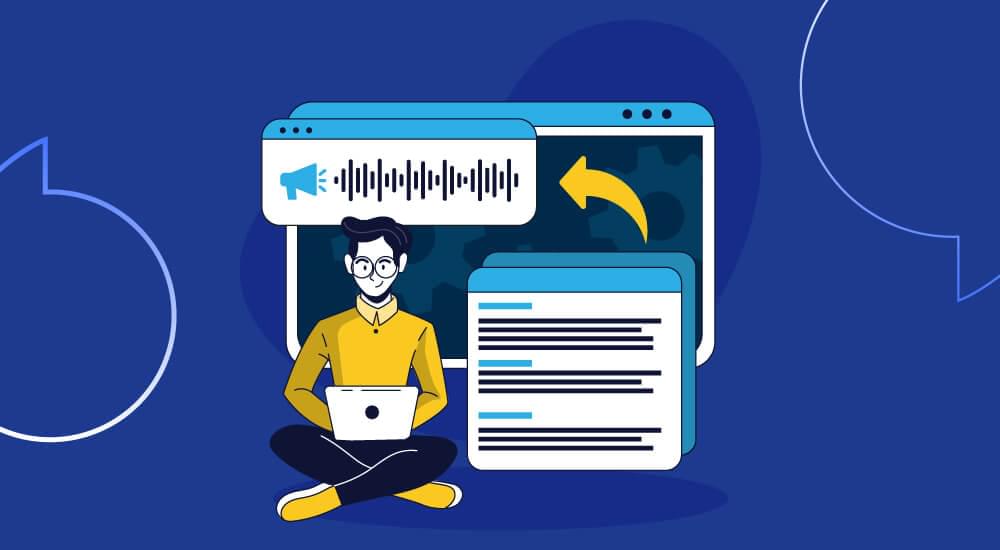accessibility tutorials
How To Rank Your Blog Site In Search Engines
Search engine optimization and content marketing are identical. You cannot do SEO without content. No content then, obviously, no rankings as blogging is the foundation of content marketing. That’s why it’s so crucial to understanding how to optimize a blog post for SEO and easily ranking your website in search engines.
What is Search Engine Optimization?
Search engine optimization is a collection of approaches and methods applied to enhance the number of visitors to a web page by achieving a high ranking in search results. An essential highlight of SEO is getting your website understandable for both users and search engine robots.
SEO assists the engines in figuring out what a specific page is all about and how it may be helpful for users. At the present high level of competition, it is vital to be as high as feasible in the search results, which comes with effective SEO tactics. But, many aren’t sure of how to rank your new website on Google. Search engine optimization, or SEO, is significant for marketers. When you optimize your web pages, including your blog posts, you’re getting your website more noticeable to people accessing keywords associated with your product or service by search engines like Google.
7 Easy Steps To Start Ranking Your Blog
1. Target the Best Keywords
Keyword research is considered one of the most crucial perspectives of SEO. It should be the first thing you should study when you intend to learn how to begin a blog. It puts down the foundation of your optimization, and you shouldn’t get it mistaken.
Utilizing your favorite keyword research tools like KeywordTool.io, Google Keyword Planner, or SEO Book’s Keyword Tool, gather a list of potential keywords you can target. In critical, see for longer phrases that are highly relevant to your business but don’t seem very aggressive. Overall, it’s more satisfying to pick a central topic for your post than pick a variation of words and expressions that will accommodate you to flesh out that point. It is better to quickly choose one or two keywords and then utilizing them over and over again. This practice could even harm your blog site ranking.
2. On-page SEO

The on-page SEO is efficiently utilizing your preferred keywords in important sections of your post. A plugin like Yoast SEO or the All in One SEO Pack can help with this. The most notable places to handle your keywords and phrases are in your:
- URL (e.g., www.yourdomain.com/your-keywords-here)
- Title tag
- Header tags (H2, H3, etc.)
- Alt image tags and image inscriptions (where relevant)
- Everywhere your content
Repeatedly, recognize that it’s better to target a problem rather than a definite keyword. It is because Google has become more competent at running a page’s topic based on the entire context of that page. It is why it’s necessary to identify and employ a mixture of related words and phrases.
3. Choose a format that has the best possibility of gaining links and shares
A study has revealed that particular blog post formats manage to perceive more links and social shares. We understand that links and shares both go a long way toward increasing rankings.
Based on research from BuzzSumo and Moz, the content types that usually show to be most popular are “opinion-forming, authoritative content on present topics or well investigated and proof content.”
It would be even more compelling to your targeted audience to have them captivated by your site content by adding an automatic blog reader like WebsiteVoice. It will add a modernized impact that benefits your content and those with impediments and have them share your content with people like them and experience your site’s innovation.
4. Word count
It’s necessary to perceive there’s no explicit, “optimal” word count. Concise content like 50 words has been identified to outrank 1,000-word blog posts, suggesting that any length can act if it’s written well. With that said, a study has revealed that high-ranking positions tend to be more extended and more in-depth. Searchmetrics, for example, affirmed that the top 10 pages received an average of 1,285 words. SerpIQ, on the other hand, has obtained 1,500 words to be a great target length.
5. Promote it on social media
Regrettably, research shows us that most content never makes much traction online. One idea may be that many business owners don’t have a strategy to develop and administer their blog posts. One of the best methods to make your posts noticed is to share them on social media. Considering you’ve already built up your audience on multiple platforms, you should be participating in your posts with your fans and followers. If you don’t yet have an audience, you can finance some reasonable social ads to get more click-throughs and build your follower base.
Check this out: Types of communication and how to improve it
6. Generate links to your blog posts.
The ultimate step to making your blog post ranking in Google is to build links to that post. While most company owners use time getting links to their home page and other high-value pages, several people neglect to create links to particular posts. Getting these very targeted links can be difficult unless your blog posts are beneficial, practical, and unique. But, as mentioned, if you build “link-worthy” content, you hold the best chance of directly acquiring links from other bloggers and journalists.
7. Develop Your Site’s Load Speed

Page load rate is a ranking factor, which means that if you are required to rival your competition, you’ll be required to make your pages load faster. Even if the Page load speed wasn’t a ranking factor, it’s still essential to give the best quality to your readers. To optimize your page speed you want to proceed to Google Pagespeed Insights and insert your URL. Go for the references and perform Google’s proposals. It will assist you in improving your website’s page speed significantly. You can also install a caching plugin on your WordPress to increase your page speed.
Optimizing Previous Blog Posts To Rank Higher
Distributing the post is just the start. If we travel back and search to optimize old posts, we’ll encourage more business in less time than it takes to write a new post. Blog posts issued months or years ago may already be settling high or on the second page two. It is actually an enormous opportunity since the top of page two is almost the bottom of page one. It’s expected that with some simple updates, you can adjust the rank a little and increase the traffic a lot.
Here’s how to locate the posts and pages that are almost ranking high:
- Go to Google Analytics and arrange the date range for at least a year.
- Then View Acquisition > Search Console > Queries.
- Sort by Average Ranking Position.
- Established an Advanced Filter, so you only notice inquiries that have a rank of more than 10.
It will provide you a list of phrases for your site ranks but are not on page one. Clean out the words that incorporate your company name, and begin scrolling through, seeing phrases relevant to blog posts.
Proceed searching for these phrases in Google to discover the related blog posts and verify the rank for all. You may find that the position for terms in this report differs hastily from your own search results. It doesn’t matter, as you’re just looking for hints into which blog posts to develop.
Related: Top 5 Best Blogging Sites In 2021
Conclusion
To conclude, blog pages may very well be critical to our markets and recognition, but it’s the keywords and, more significantly, the ranking that makes us meaningful or otherwise. To reserve a name in the business, your website must be related to the user’s search standards.
Generating blog posts can be expensive and time-consuming. If you’re proceeding to invest time and money, you need to make sure those posts move to drive traffic and prospects over the long term. The strategies above should accommodate. Always remember that performing these tips won’t take you to the first place overnight. When it reaches SEO for bloggers, you have to be patient. Just ensure that you list each adjustment you proceed with and estimate the execution of your SEO strategy. Things and processes change much in SEO, but as long as you follow up with the basics, you can still see outcomes.









